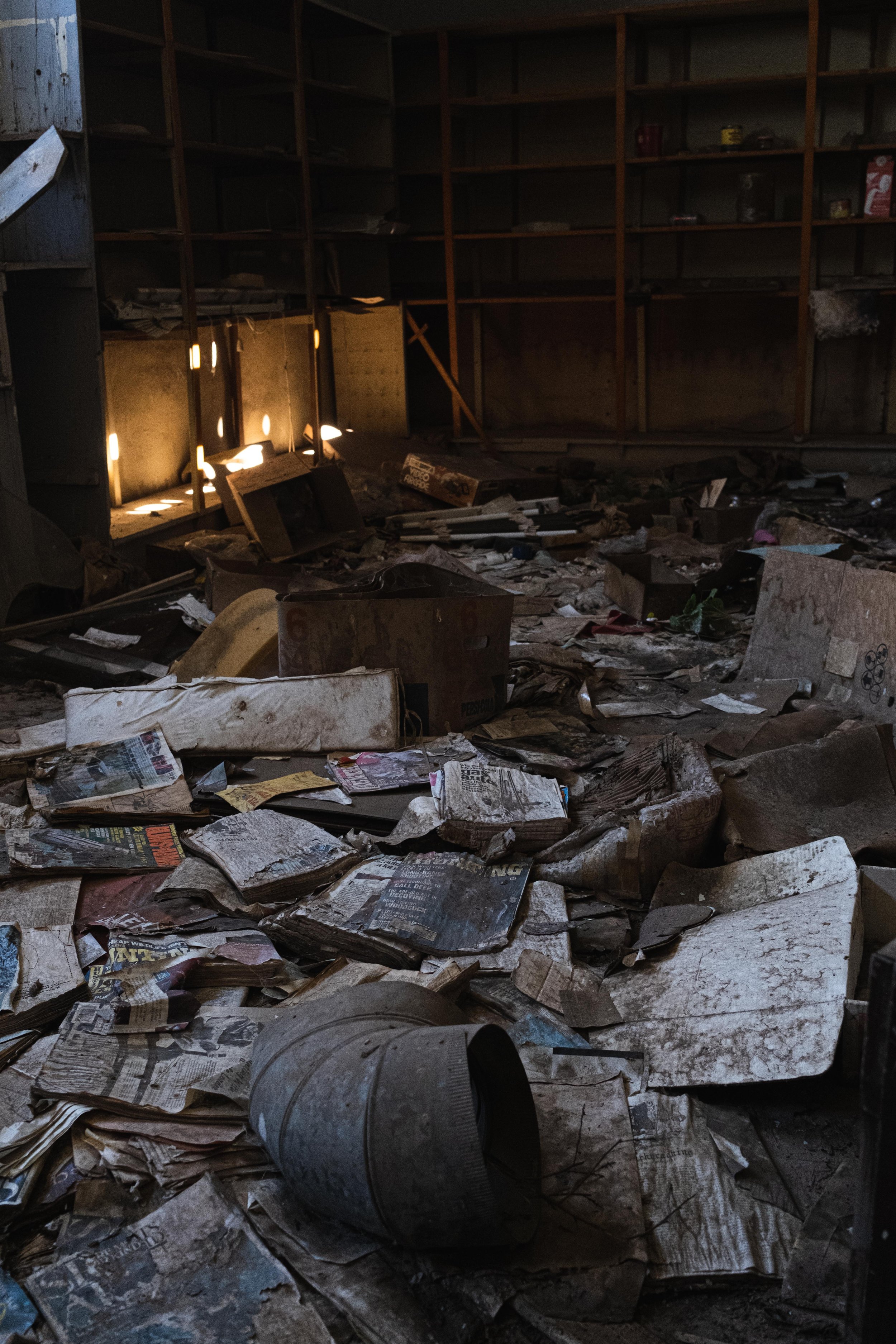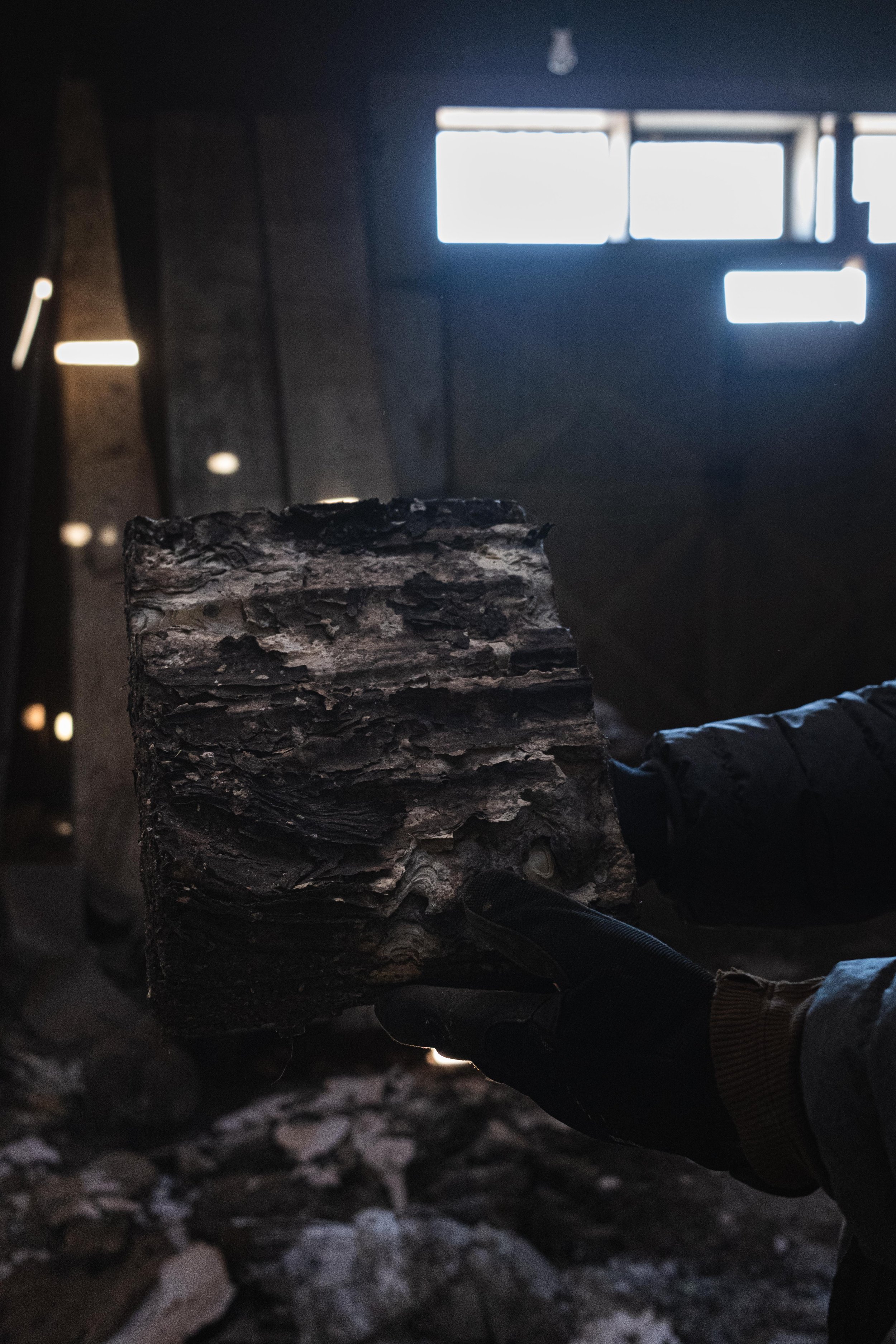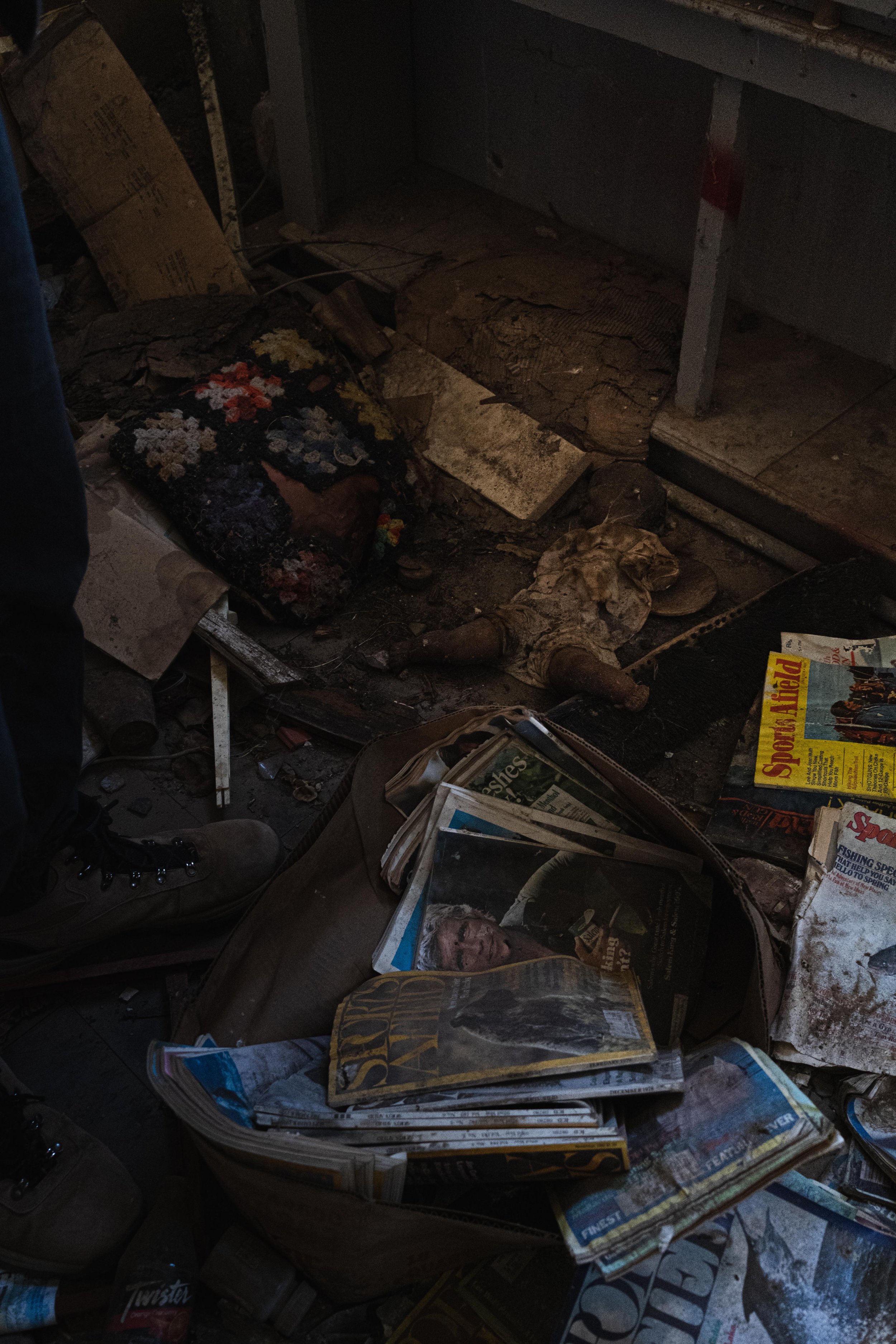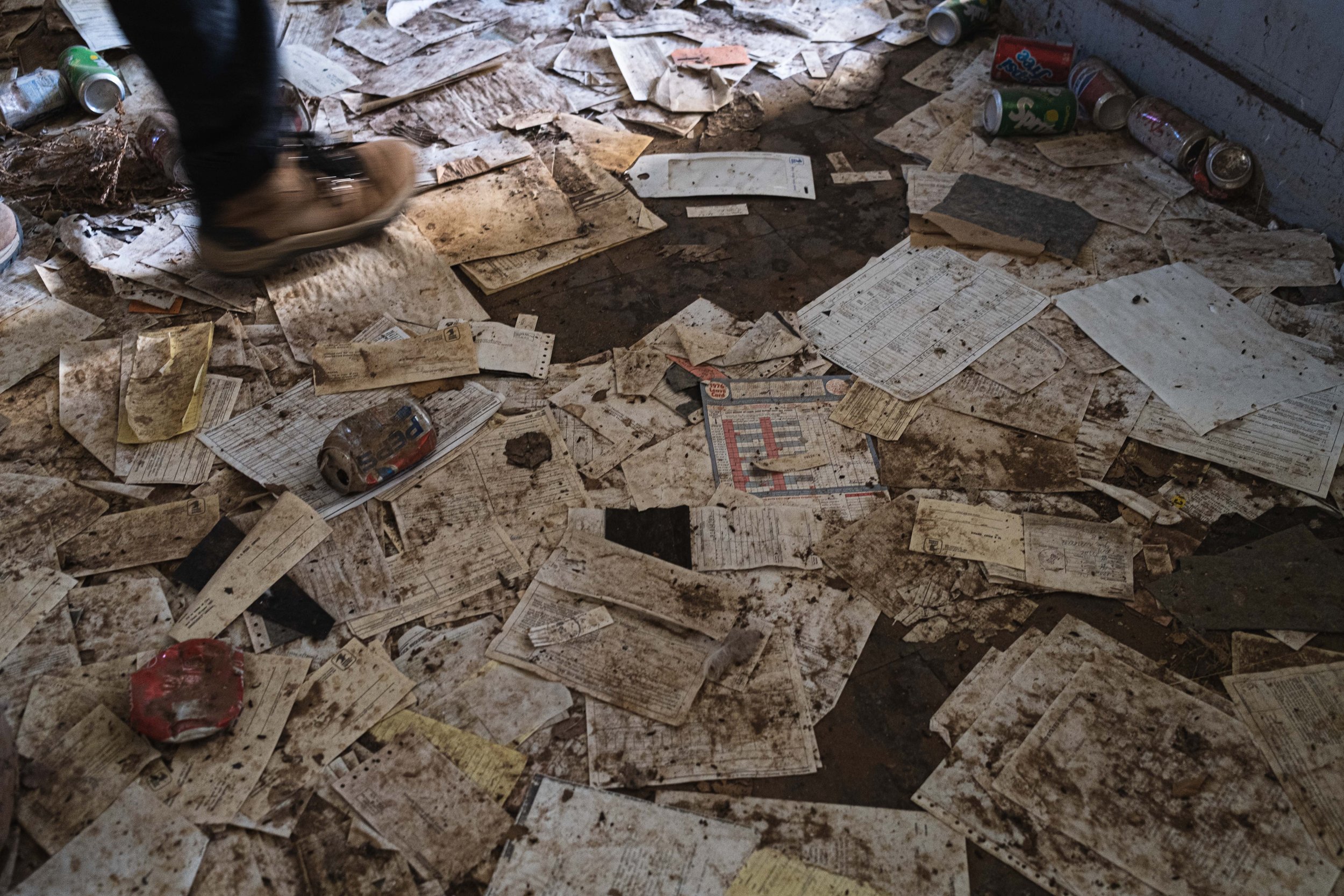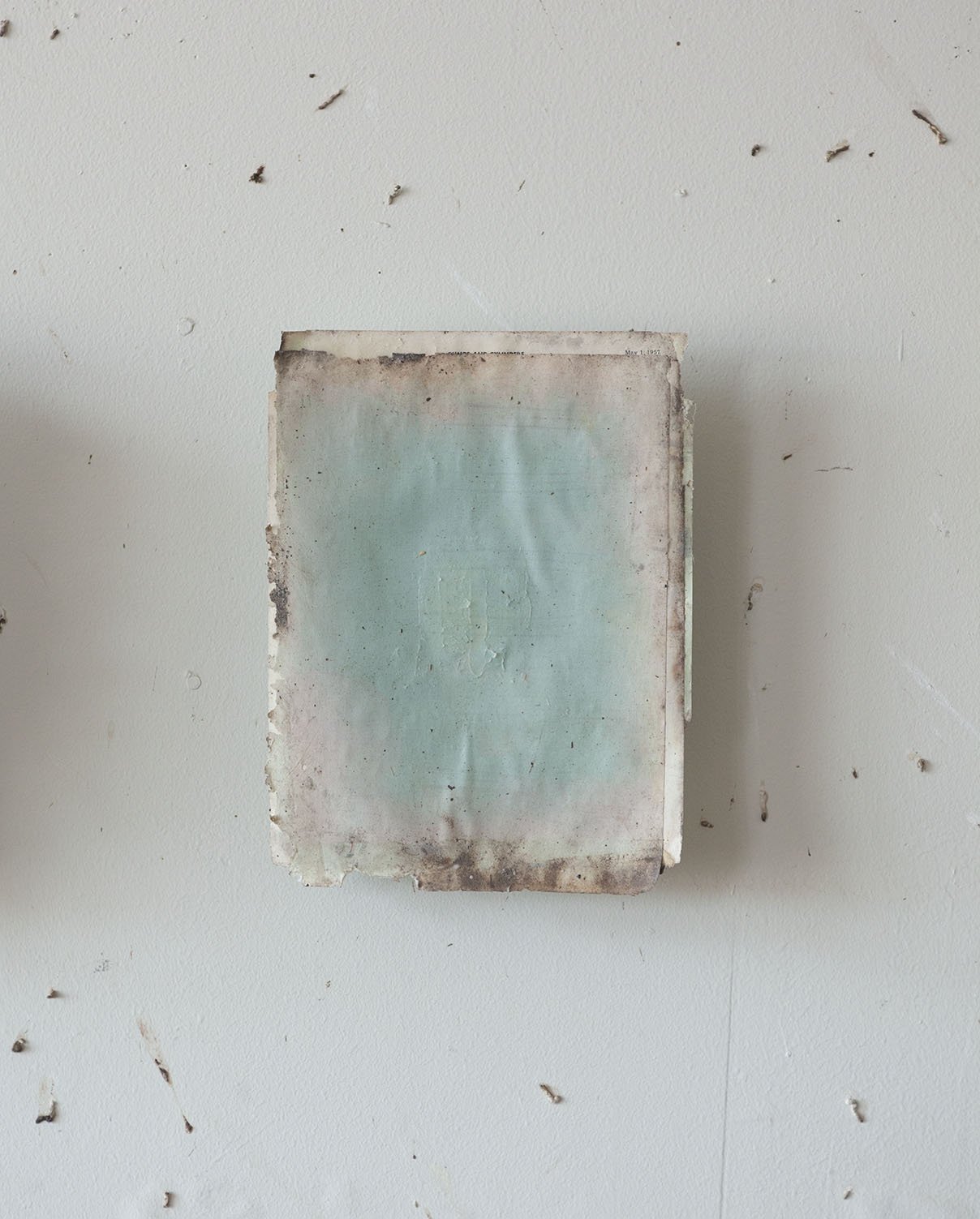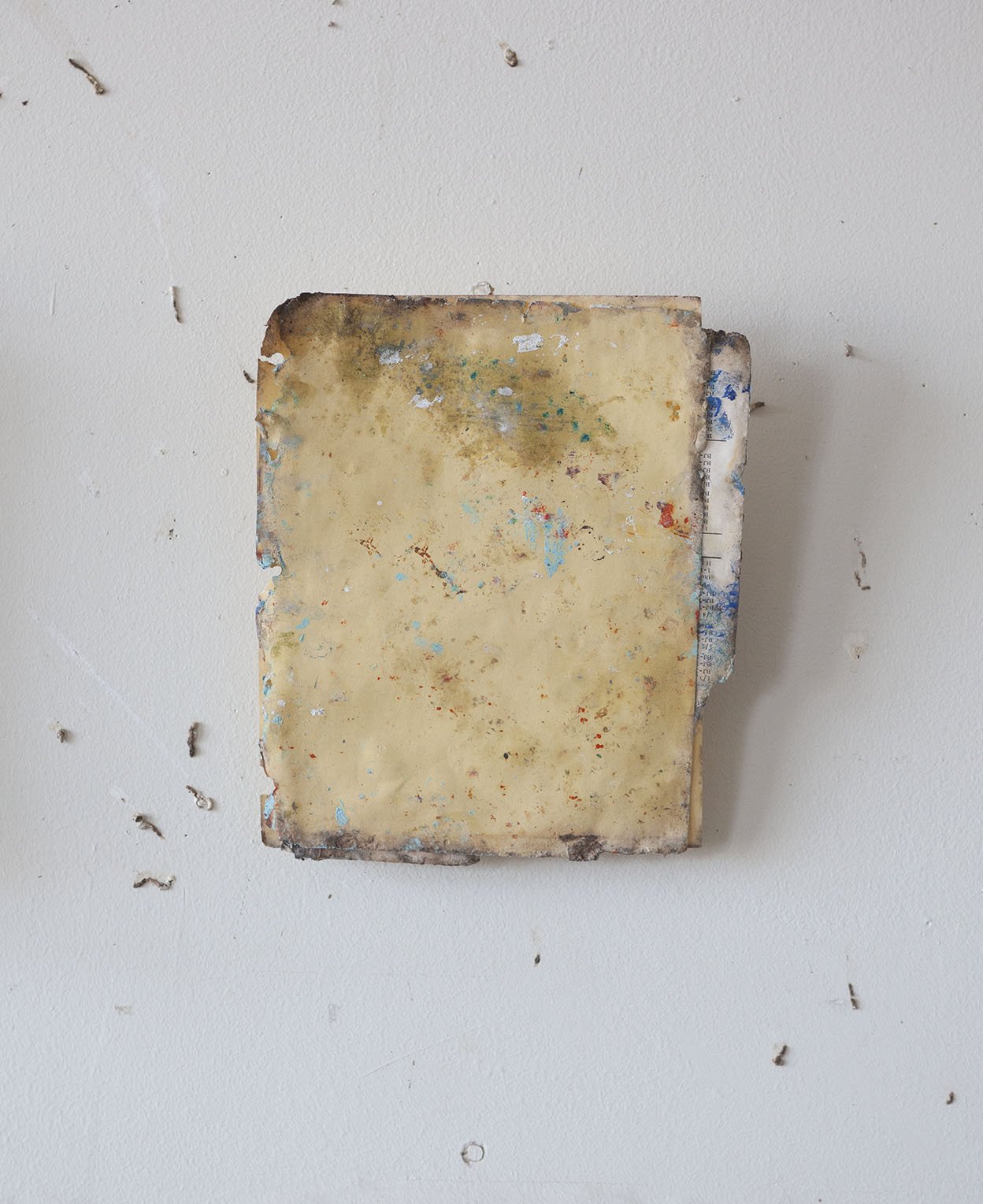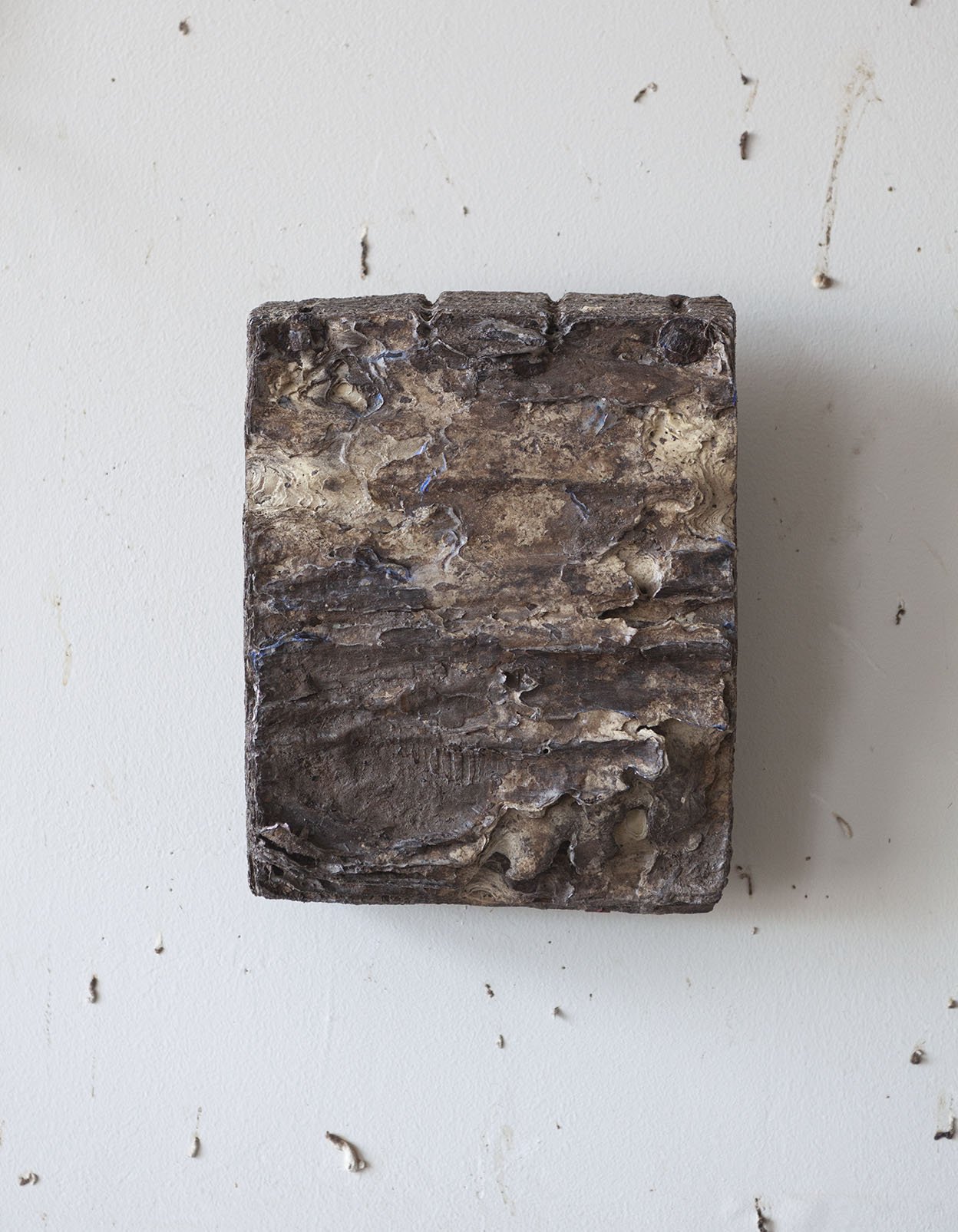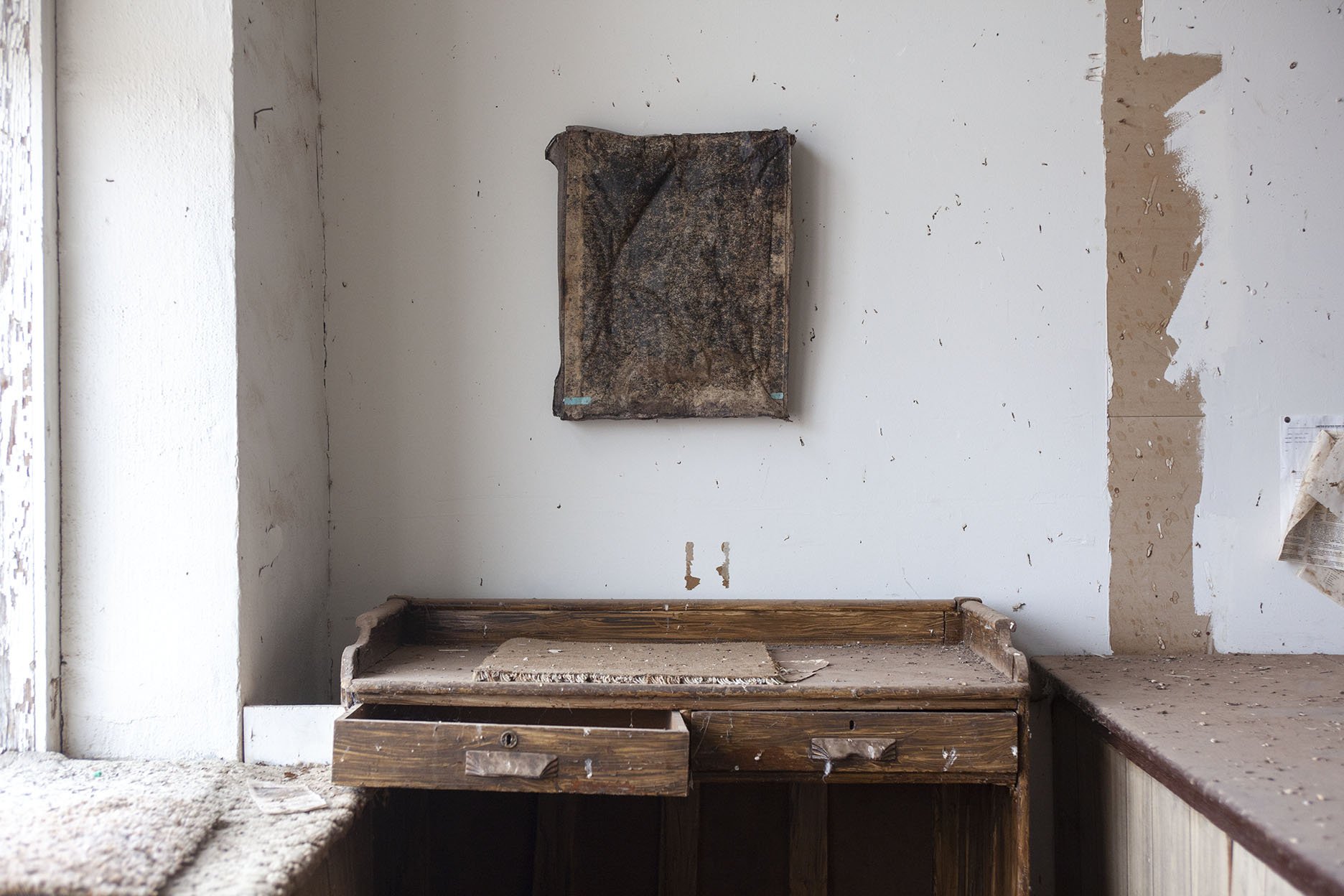Nihil (Part I)
Book of Hours (Yeso, New Mexico, 1957) | Mixed Media & Collage | 84 x 76 in. | 2021
Installed in Abandoned Post Office in Yeso, New Mexico.
New Mexico is the fourth largest state in terms of land mass, one of the least populated, and also one of the poorest in the country. Small isolated communities, often in final stages of neglect and ruin, contrast against the immense geological displays of the natural landscape. One sees far into its coruscating distance during the day, and up into the perforated cosmos at night. What began as a kind of exile from the cities to which I once sought and failed to belong, has become a home, and not just a home, but a kind of repatriation of the soul.
“Book of Hours (Yeso, New Mexico, 1957)” was the final painting I finished in 2021, marking the end of my fourth year living here. Titled after Rilke’s collection of poems, its collage elements are pages ripped from a 1957 Aermotor Company catalogue, a manufacturer of wind-powered water pumps. I found the catalogue buried among the detritus of an abandoned post office in the ghost town of Yeso, New Mexico. It had evidently been left there from that time. For this reason, I dated the work 1957-2021, as, more and more, I think of time itself as a collaborator.
There are many layers of color in the work, namely turquoise, yellow, and pink, the inherent colors of the pages themselves. Each color was added opaquely on top of the other. When all three colors had been layered, I began the process again, eventually covering it in the dregs of all previously mixed colors on my palette from various other paintings so that it had the appearance of mud. There are seven layers of paint on the canvas with seven rows and seven columns of seven pages.
From Rilke’s Book of a Monastic Life:
Dear darkening ground,
you’ve endured so patiently the walls we’ve built,
perhaps you’ll give the cities one more hour
and grant the churches and cloisters two.
And those that labor—will you let their work
grip them another five hours, or seven,
before you become forest again, and water, and widening wilderness
in that hour of inconceivable terror
when you take back your name
from all things.
Just give me a little more time!
I want to love the things
as no one has thought to love them,
until they’re worthy of you and real.
I want only seven days, seven
on which no one has ever written himself—
seven pages of solitude.
Abandoned Post Office in Yeso, New Mexico.
I first stumbled on Yeso in May of 2020, two months before my daughter was born. That summer, I installed work in abandoned spaces for the first time, two abandoned schools as it happened. I’ve often written and talked about the time I’ve spent in those old schools, the way it felt as if I was returning the work to where it came from. That its quality was like a brother to me, the brother I lost as a young boy. In just the same way that there has been more forgotten than remembered of him from the time he was alive, so it is in spaces like these. There remains such palpable evidence of time’s passage, of the trace of memory, but so little of memory itself.
But then I wonder, could it be exactly the opposite? Could it be that memory’s residue is physical, concrete, and present—not measurable, but eminent? If this is true about the human body, could it not also be true about space and time itself? If memory exists in the living cell, could it not exist in the smallest quanta comprising all things?
Abandoned Post Office in Yeso, New Mexico.
The strange combination of vigilance and awe with which I experience these places seems to me a kind of inward translocution. The “nothingness” of my environment is also my witness, and not just witness, but chorus. What appears to be nothing, empty, useless, or dead within the common use of language is, when confronted by the body, rather the opposite. It is alive and indelible in precisely the same way images occasionally can be.
We assume images to be the “something” emerging in contradistinction from the “nothing,” that so-called void religion and science yearn to “solve.” Yet as the culture promulgates its images faster than can be enumerated, the image seems increasingly vacuous, disposable, blithe, airy, narcissistic, and mute. The obliteration of imagery in the process of making a painting gains, rather than loses, in nearness to suppressed memory, not of an event or person, but of my own authenticity.
In this way the attentive touch to the surface becomes more important than anything the surface might try to describe or narrate. The attentive touch is an experience of the body’s relation to the “outside” world as opposed to a description or analysis of it. Categorical distinctions between abstraction and representation are irrelevant and inadequate in approaching deeper needs and questions.
When attentive, both the world and my being in it are made indistinguishable. What I call repatriation, through touch, is also a disclosure of a forgotten life, a disclosure of the enlarged and insoluble self, which might well include the ego, but also transcends it.
It would require another year following the summer of the abandoned schools to realize that what I ought to do is exhume some of the raw material from the spaces themselves and bring it back to the sites of origin. The idea began to make itself known to me as I continued on what I call the “Out of Existence” works, very small paintings or objects (depending on how one sees it) made from things left behind: flattened pails with bullet holes, wood shingles, car wreckage, aluminum trays, pieces of toilet seat, and, my favorite, objects I can’t identify. Each object implies its past, if no longer its identity, and one gets the strange feeling that each hides a secret.
“Before one says something, perhaps it is better to say nothing. My music has emerged only after I have been silent for quite some time, literally silent. For me, ‘silent’ means the ‘nothing’ from which God created the world. Ideally, a silent pause is something sacred…If someone approaches silence with love, then this might give birth to music. A composer must often wait a long time for his music. This kind of sublime anticipation is exactly the kind of pause I value so greatly.”
-Arvo Pärt
Out of Existence XIV | Mixed Media on Unidentified Found Object | 18 x 22 in. | 2021
Installed in Abandoned Post Office in Yeso, New Mexico.


